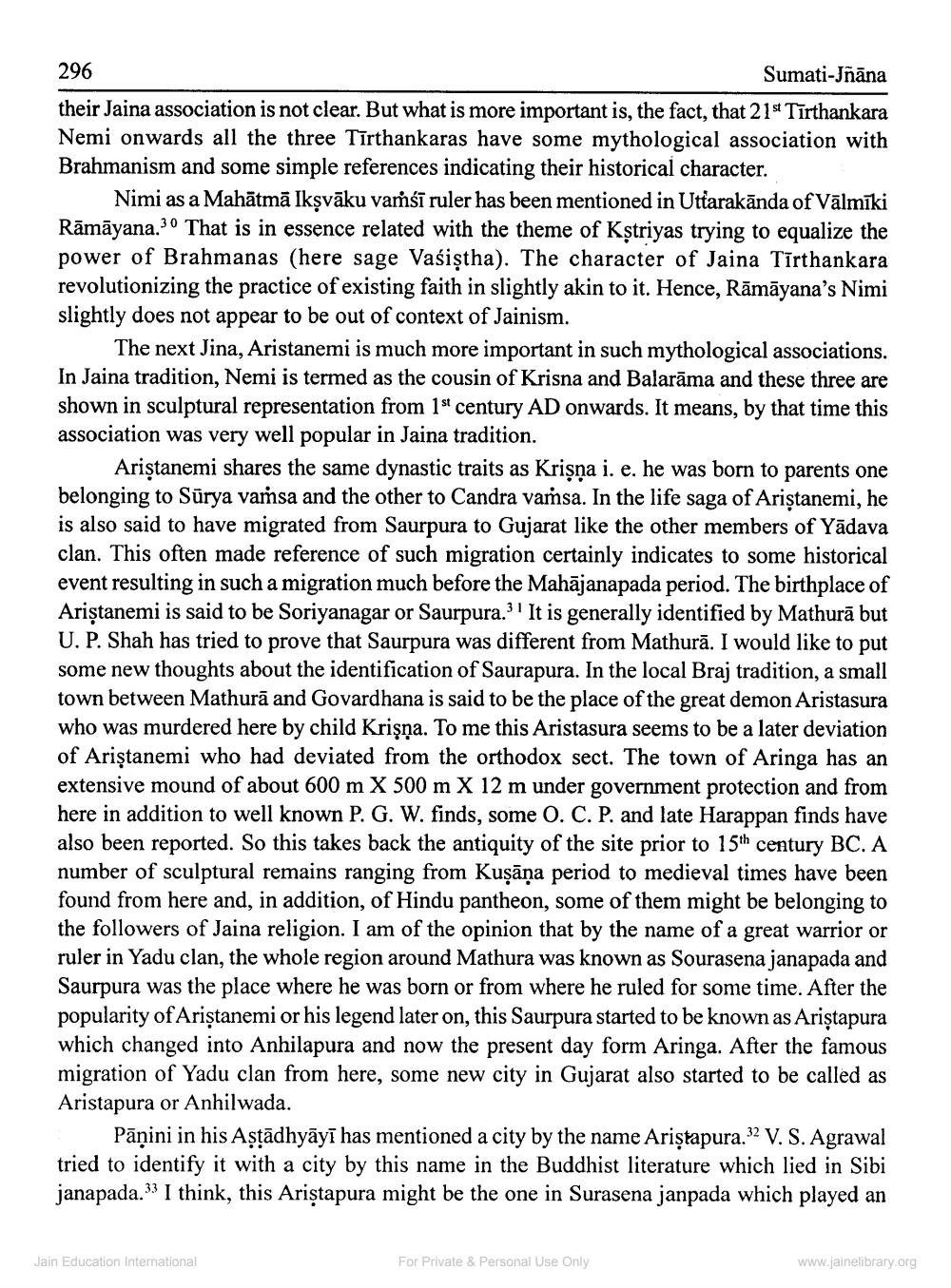________________
296
Sumati-Jñāna
their Jaina association is not clear. But what is more important is, the fact, that 21st Tīrthankara Nemi onwards all the three Tirthankaras have some mythological association with Brahmanism and some simple references indicating their historical character.
Nimi as a Mahātmā Ikṣvāku vaṁśī ruler has been mentioned in Uttarakanda of Valmiki Rāmāyana.30 That is in essence related with the theme of Kṣtriyas trying to equalize the power of Brahmanas (here sage Vasistha). The character of Jaina Tīrthankara revolutionizing the practice of existing faith in slightly akin to it. Hence, Rāmāyana's Nimi slightly does not appear to be out of context of Jainism.
The next Jina, Aristanemi is much more important in such mythological associations. In Jaina tradition, Nemi is termed as the cousin of Krisna and Balarama and these three are shown in sculptural representation from 1st century AD onwards. It means, by that time this association was very well popular in Jaina tradition.
Ariştanemi shares the same dynastic traits as Krisņa i. e. he was born to parents one belonging to Surya vamsa and the other to Candra vamsa. In the life saga of Ariştanemi, he is also said to have migrated from Saurpura to Gujarat like the other members of Yadava clan. This often made reference of such migration certainly indicates to some historical event resulting in such a migration much before the Mahājanapada period. The birthplace of Aristanemi is said to be Soriyanagar or Saurpura.31 It is generally identified by Mathura but U. P. Shah has tried to prove that Saurpura was different from Mathura. I would like to put some new thoughts about the identification of Saurapura. In the local Braj tradition, a small town between Mathura and Govardhana is said to be the place of the great demon Aristasura who was murdered here by child Krişņa. To me this Aristasura seems to be a later deviation of Ariştanemi who had deviated from the orthodox sect. The town of Aringa has an extensive mound of about 600 m X 500 m X 12 m under government protection and from here in addition to well known P. G. W. finds, some O. C. P. and late Harappan finds have also been reported. So this takes back the antiquity of the site prior to 15th century BC. A number of sculptural remains ranging from Kuṣāņa period to medieval times have been found from here and, in addition, of Hindu pantheon, some of them might be belonging to the followers of Jaina religion. I am of the opinion that by the name of a great warrior or ruler in Yadu clan, the whole region around Mathura was known as Sourasena janapada and Saurpura was the place where he was born or from where he ruled for some time. After the popularity of Aristanemi or his legend later on, this Saurpura started to be known as Aristapura which changed into Anhilapura and now the present day form Aringa. After the famous migration of Yadu clan from here, some new city in Gujarat also started to be called as Aristapura or Anhilwada.
Panini in his Aṣṭādhyāyī has mentioned a city by the name Aristapura.32 V. S. Agrawal tried to identify it with a city by this name in the Buddhist literature which lied in Sibi janapada.33 I think, this Aristapura might be the one in Surasena janpada which played an
Jain Education International
For Private & Personal Use Only
www.jainelibrary.org




